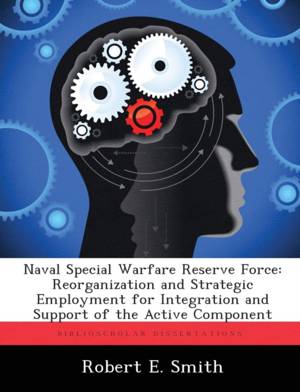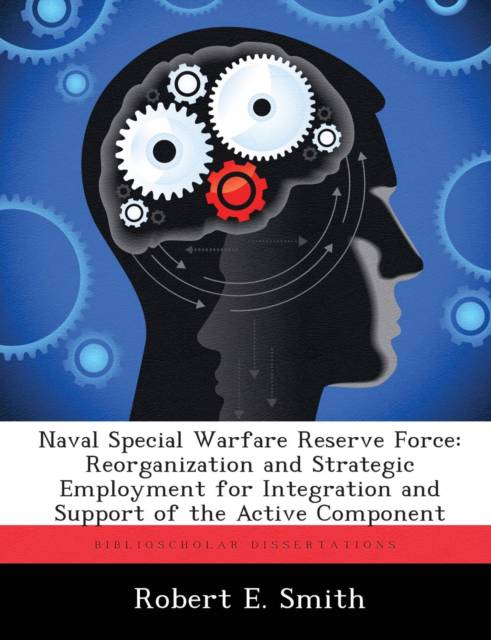
En raison d'une grêve chez bpost, votre commande pourrait être retardée. Vous avez besoin d’un livre rapidement ? Nos magasins vous accueillent à bras ouverts !
- Retrait gratuit dans votre magasin Club
- 7.000.000 titres dans notre catalogue
- Payer en toute sécurité
- Toujours un magasin près de chez vous
En raison de la grêve chez bpost, votre commande pourrait être retardée. Vous avez besoin d’un livre rapidement ? Nos magasins vous accueillent à bras ouverts !
- Retrait gratuit dans votre magasin Club
- 7.000.0000 titres dans notre catalogue
- Payer en toute sécurité
- Toujours un magasin près de chez vous
Naval Special Warfare Reserve Force
Reorganization and Strategic Employment for Integration and Support of the Active Component
Robert E Smith
Livre broché | Anglais
54,45 €
+ 108 points
Description
This monograph examines the current organizational structure and employment of the Naval Special Warfare (NSW) Reserve Force, to research the possibility of increasing force readiness through command reorganization and implementation of a reserve employment strategy. The historical significance of the Reserve Component illustrates the changes in the reserve force imposed by a changing strategic environment. Important to this study was the role the Reserve Component has played the throughout history and its ability to adapt to world wars and peacetime environments. The end of the Cold War created a change in the strategic environment that required the military to adapt to full spectrum operations around the globe. The Department of Defense initiated the Total Force Policy as a method to integrate all resources, Active, Reserve, and National Guard, and meet increasing objectives with a smaller force. This monograph examines the current reserve force structure and employment of the Army and Navy to illustrate the service commitment to the Total Force Policy. The Army and Navy organize their Reserve Components to assume a more active role and reduce the operational tempo of the active force. The U.S. Army Special Forces (SF) organizes and employs reserve forces in the same manner as the active SF Groups. The SF methodology for organization and employment offers possible changes for NSW to implement. The current NSW organizational structure and employment strategy illustrate the underutilized reserve resource and the possibility of applying the lessons learned from the SF. This monograph concludes that NSW can enhance force readiness through the reorganization and employment if its reserve force. The total NSW force active and reserve components, can provide better support to theater CINCs. Properly represented, NSW can assign missions to the reserve force that will reduce operational tempo and enhance readiness of the active force. This study proposes that NSW consider
Spécifications
Parties prenantes
- Auteur(s) :
- Editeur:
Contenu
- Nombre de pages :
- 64
- Langue:
- Anglais
Caractéristiques
- EAN:
- 9781288290642
- Date de parution :
- 13-11-12
- Format:
- Livre broché
- Format numérique:
- Trade paperback (VS)
- Dimensions :
- 189 mm x 246 mm
- Poids :
- 131 g

Les avis
Nous publions uniquement les avis qui respectent les conditions requises. Consultez nos conditions pour les avis.






